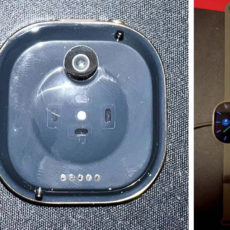
There’s this Windows 98 smartwatch, and then the world’s first slime mold-powered living smartwatch created by University of Chicago scientists. It consists of an electrically conductive single-cell organism known as “slime mold” that only functions when the organism is healthy, thus requiring the user to provide it with sustenance.
What does this smartwatch do? Well, it’s designed to measure the wearer’s heart rate and second function is entirely dependent upon the health of Physarum polycephalum, a species of slime mold sometimes called “the blob”. The latter is placed into a small enclosure built onto the watch where the user can regularly feed it a mixture of water and oats for growth. When this slim mold reacahes the other end of the enclosure, an electrical circuit is activated to measure heart rate. This organism will not die off if you forget to feed it for years, as it enters a dormant state. In the study with five participants who each wore the smartwatch for 2-weeks, they all cared for the organism until heart rate monitoring was enabled, while the second week had them not feeding it to disrupt that function.
- WHY APPLE WATCH SE — All the essentials to help you monitor your fitness, keep connected, track your health, and stay safe. Now up to 20 percent...
- EASILY CUSTOMIZABLE — Available in a range of sizes and colors, with dozens of bands to choose from and watch faces with complications tailored to...
- HEALTH AND SAFETY FEATURES — Get help when you need it with Crash Detection, Fall Detection, and Emergency SOS. Get deep insights into your health,...
With our devices, we can engage in a lot of different forms of care, like cleaning and taking care of them, or repairing them when they’re broken. But a lot of the ways that consumer devices are designed now, those aspects of care are less focused on or are made inaccessible; they are made so that you trash them, instead of engaging with them more. So I definitely think there is a design takeaway of focusing on this aspect of caring for devices instead of just consuming them,” said Jasmine Lu, University of Chicago scientist.


![Apple Watch SE (2nd Gen) [GPS 40mm] Smart Watch w/Midnight Aluminum Case & Midnight Sport Band - S/M....](https://m.media-amazon.com/images/I/31IhYwtLhPL._SL160_.jpg)



